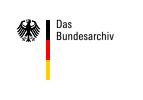
Portal on Forced Labour in the National Socialist State
zur Hauptnavigation zum Servicemenü direkt zum Inhalt
Poland - the Beginning of the Military Expansion
The employment of Polish seasonal workers in agriculture was traditionally of continuous significance in the German-Polish relationship. Since 1936 there had been annual negotiations with the Polish government about the manpower contingent, the extent of which increased dramatically year after year. When the Polish government held back the agreed contingent of 90,000 workers in 1939 due to the growing tension in the relationship with the German Reich, Polish citizens were admitted to the Reich without any identity documents and registered in employment offices, which had been set up specifically for them near the border.
Due to the outbreak of the war on 1 September 1939 the recruitment of foreign manpower in the Reich had reached a new level. Germany’s previous plans for expansion were hardly linked to a mobilization of German employees, since neither the capture of Austria nor Czechoslovakia had required any combat missions. The campaign against Poland required for the first time the conscription of civilians meaning the withdrawal of the local workforce from business life. They had to be replaced by foreign workers. Already in autumn 1939, a few weeks after Poland had been occupied, it became clear that the subsequent manpower shortage could neither be absorbed by voluntary foreign manpower nor any Polish prisoners of war. Consequently, this caused systematically implemented compulsory measures for the recruitment of manpower. To begin with, those Polish territories that had been integrated in the administrative divisions of the German Reich were affected more strongly than the so-called "General Government".

The P-badge marked the group of Polish workers who were subject to severe discrimination.
Source: DHM, Berlin, A 93/18
Until the war expanded towards the West in May 1940, Poland was the only reservoir of foreign labour that was to be tapped. The workers were recruited by force through conscriptions according to their year of birth, by means of "Gestellungsquoten" that the district and municipal administrations were imposed with and through raids for the Reich service. The enactments that were put into force in March 1940 by the "Reichsführer" SS (Heinrich Himmler) in terms of the treatment of Polish workers (decrees for Polish workers) placed the Polish in a discriminating way beyond the legal system applicable to Germans. By means of the letter "P" which had to be sewn on the right chest of each garment, the design of which had been decreed in every detail, workers from Poland were to be stigmatised and recognisable for everyone as second class citizens. It went as far as not only governing sexual intercourse with Germans but stipulating capital punishment for a violation of said act. It was prohibited to leave the location of employment and the visit of recreational facilities, where they could get into contact with Germans, (theatre, cinema, dance events, church service, public means of transport) was heavily restricted. They were only allowed to go to pubs that had been specifically designated.

Polish forced workers upon their confinement into concentration camp Sachsenhausen
Source: Federal Archives, Bild 183-78612-0009
A casual working attitude and rebelliousness often resulted in "forced labour in a concentration camp". In case of sabotage and “other serious violations of discipline at work" they had to face a "placement in an "Arbeitserziehungslager lasting several years". And above all, Polish workers were reminded "to bear in mind, that it had been their own decision to come and work in Germany."
The implementation of the decreed discriminating treatment on site was taking far longer in agriculture than in the industry. Law enforcement officers kept critizising the rural population in Germany of socialising too closely with the Polish people, for example by having their meals together instead of separately and that the Germans were too sympathetic to them, which would have a negative effect on the German national soul.
The situation was different in industry, where, in the course of the preparations for the Russian campaign a growing number of forced labourers were needed for the armaments production starting summer 1940. They frequently suffered from poor nutrition or lack of food, lack of medical and hygienic care and defamations and maltreatments by German employees and superiors. In view of these deficiencies many workers had no choice other than violating the rules and leaving the camp for example to try and get hold of food in some way. Many of them, who tried to maintain their strength in such way were caught and taken to an "Arbeitserziehungslager" or concentration camp. Others managed to establish a flourishing black market with an organised trade of groceries amongst foreigners at their workplace.
In the overall period from 1939 to 1945 some 1.6 million Polish civilians and some 300,000 Polish POWs had to do forced labour in Germany.

